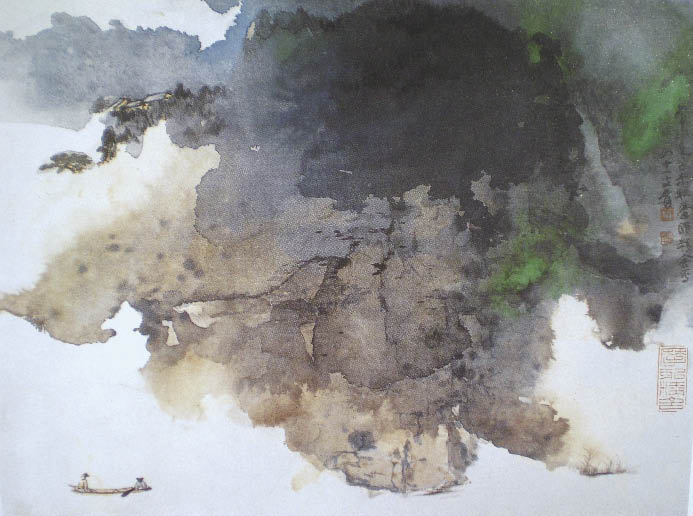| Chinese Paintings Climb in Value
By staff reporter WU BING
Thirty years ago, you could buy a top-grade Chinese painting produced around 1950 for just RMB 20 to 30. If you still had the painting and it was in good condition, you might be surprised what it could fetch on today’s art market. Such paintings have appreciated a minimum of 1,000-fold – some are worth as much as 100,000-times their original value.
In the early 1950s, works by Qi Baishi (1864-1957), a famous painter of the era, sold for RMB 4-5 per square chi (33cm by 33cm). A painting of four square chi was worth less than RMB 30. By 1985 his work sold on Hong Kong’s art market for between HK $300,000 and HK $1 million. The figure had increased to HK $1.2 million four years later, and by 1994 his paintings were fetching RMB 5.17 million. The album Flowers, Grass and Insects, produced by Qi Baishi when he was 95 years old, was auctioned for a record price of RMB 24.64 million. The pace of appreciation in the value of Qi’s works shocked everyone.
The value of other Chinese masters’ works has shown a similar trend, rising dramatically with the maturing of the art market. Paintings by Huang Binhong (1865-1955) were sold for RMB 15,000 per square chi in 2000, but increased to RMB 60,000 in 2003. His masterpiece Mountain Journey sold for RMB 6.38 million at the 2005 Autumn Auctions – nearly RMB 400,000 per square chi.
Zhang Daqian’s (1899-1983) works hold a pivotal position in the painting and calligraphy market. They have always been very popular with investors and collectors. From 1992 to April 2008, the average transaction price for his work was RMB 111,800 per square chi. In October 2002, his fine work Red Lotus, painted in 1975, was auctioned at a sky-high price of RMB 20.22 million.
 |
| A Returning Boat on a Spring River by Zhang Daqian. |
As an important person in Chinese art circles, Xu Beihong’s (1895-1953) works have continually set records in various auctions since the business started in China in 1993. At the end of 2005, the average price of his paintings reached their highest level since 2000. For example, three paintings depicting horses were sold for HK $2.136 million, HK $1.08 million and HK $5.272 million respectively.
A History of 2,000 Years
Even setting aside the truly ancient art of cliff paintings, China has a painting tradition stretching back over 2,000 years, making it one of the oldest continuous artistic traditions in the world. Paintings first appeared during the Han Dynasty in 202 BC, done on silk using brushes and mineral pigments. They continued to develop in the following centuries, and by the Tang Dynasty (618-907), the three genres of landscape, figure, and bird-and-flower, as well as the meticulous and freehand brushwork styles, were established.
Chinese landscape and figure paintings are comparable with their Western counterparts, though Chinese landscape painters do not follow the rule of perspective as closely as Western artists. Bird-and-flower paintings feature the most distinctive Chinese characteristics. They depict any creature other than human beings, from towering trees to low foliage, from big elephants to tiny insects, reflecting the vitality of a world beyond that of humankind.
Chinese figure painting has its roots in religious frescos, and experienced its heyday in the Tang and Song dynasties. However it then lost its dominant position in Chinese artistic practice until its rejuvenation in 1522 that lasted through the Ming (1368-1644) and Qing (1644-1911) dynasties. Modern representatives of the genre were Xu Beihong (1895-1953) and Lin Fengmian (1900-1991), who boldly borrowed from Western oil techniques and brought Chinese figure painting into the modern era.
|
